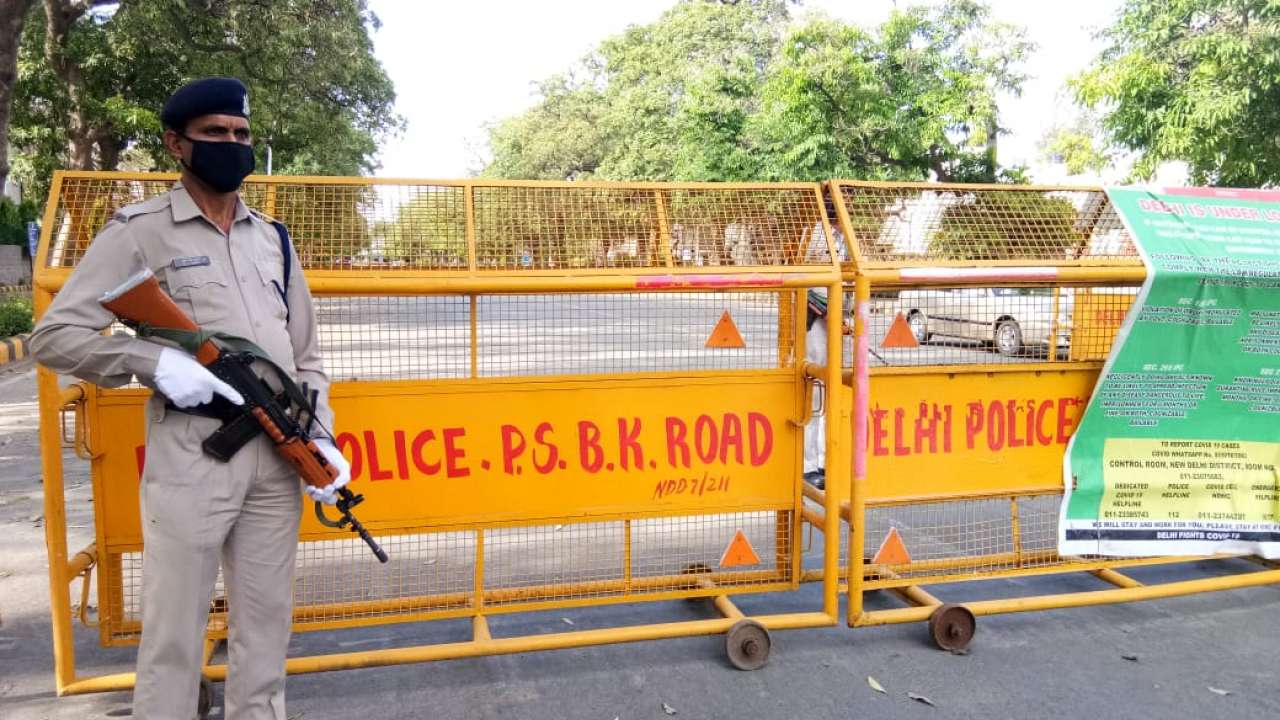Liquor stores, paan shops allowed to open from May 4 in green zones with social distancing norms
In green zone areas, all activities are permitted except the limited number of activities which are prohibited throughout the country, irrespective of the zone.

Representational image
The Centre on Friday said it will allow the opening of liquor stores and paan shops in the green zones during the third phase of the lockdown, beginning May 4.
The Ministry of External Affairs (MHA) has extended the nationwide lockdown for two weeks from May 4 and issued a fresh set of guidelines for the same.
"After a comprehensive review, and in view of the Lockdown measures having led to significant gains in the COVID-19 situation in the country, Ministry of Home Affairs (MHA) issued an Order under the Disaster Management Act, 2005, today, to further extend the lockdown for a further period of 2 weeks with effect from May 4, 2020," a government statement said.
The ministry has classified the country in three - green, orange and red - zones and different set of restrictions will be imposed in different areas.
Under the new guidelines, a limited number of activities will remain prohibited throughout the country, irrespective of the zone. These include travel by air, rail, metro and inter-State movement by road; running of schools, colleges, and other educational and training/ coaching institutions; hospitality services, including hotels and restaurants; places of large public gatherings, such as cinema halls, malls, gymnasiums, sports complexes etc; social, political, cultural and other kinds of gatherings; and, religious places/ places of worship for the public.
However, movement of persons by air, rail and road is allowed for select purposes, and for purposes as permitted by MHA.
In a green zone, all activities are permitted except the limited number of activities which are prohibited throughout the country. The green zones will be districts with either zero confirmed cases till date; or, no confirmed case in the last 21 days.
Under the guidelines for public places, an annexure attached with home ministry order said, "Shops selling liquor, paan, gutka, tobacco etc. will ensure minimum six feet distance (2 gaz ki doors) from each other, and also ensure that not more than 5 persons are present at one time at the shop."
The consumption of liquor, paan, gutka and tobacco is, however, not allowed in public places. Spitting in public places shall be punishable with fine, as may be prescribed by the State/ UT local authority, the home ministry said.
Wearing of face cover is compulsory in all public places.
All persons in charge of public places and transport shall ensure social distancing as per the guidelines issued by the Ministry of Health and Family Welfare, it said.
No organisation, manager of a public place shall allow gathering of 5 or more persons, it added.
Marriages are allowed to take place but gatherings will ensure social distancing, and the maximum number of guests allowed will not be more than 50.
Funeral and last rites related gatherings shall ensure social distancing, and the maximum numbers allowed shall not be more than 20.
Buses can also operate in a green zone with up to 50% seating capacity and bus depots can operate with up to 50% capacity.
In the red zones, outside the Containment zones, certain activities are prohibited in addition to those prohibited throughout the country. These are: plying of cycle rickshaws and auto-rickshaws; running of taxis and cab aggregators; intra-district and inter-district plying of buses; and, barber shops, spas and salons.
The classification of districts as red zones will take into account the total number of active cases, doubling rate of confirmed cases, the extent of testing and surveillance feedback from the districts.
Those districts, which are neither defined as red nor green, shall be classified as orange zones.
In the orange zones, in addition to activities permitted in the red zone, taxis and cab aggregators will be permitted with 1 driver and 2 passengers only. Inter-district movement of individuals and vehicles will be allowed for permitted activities only. Four wheeler vehicles will have a maximum of two passengers besides the driver and pillion riding will be allowed on two-wheelers.
The most sensitive areas of the country, from the spread of COVID-19 point of view, and falling within the red and orange zones, are designated as containment zones. These are areas where there is a significant risk of spread of the infection.
Strict perimeter control would need to be ensured, so that there is no movement of people in and out of these zones, except for medical emergencies, and for maintaining the supply of essential goods and services. No other activity is permitted within the containment zones.
The classification of districts into red, green and orange zones will be shared by MoHFW with the States and Union Territories (UTs) on a weekly basis, or earlier, as required. While states and UTs can include additional districts as red and orange zones, they may not lower the classification of a district included by MoHFW in the list of red or orange zones.
The new guidelines also prescribe certain measures for well being and safety of persons. Hence, the movement of individuals, for all non-essential activities, shall remain strictly prohibited between 7 pm to 7 am.
Local authorities shall issue orders under appropriate provisions of law, such as prohibitory orders [curfew] under Section 144 of CrPC, for this purpose, and ensure strict compliance.
In all zones, persons above 65 years of age, persons with co-morbidities, pregnant women, and children below the age of 10 years, shall stay at home, except for meeting essential requirements and for health purposes. Out-Patient Departments (OPDs) and Medical clinics shall be permitted to operate in red, orange and green zones, with social distancing norms and other safety precautions; however, these will not be permitted within the Containment zones.